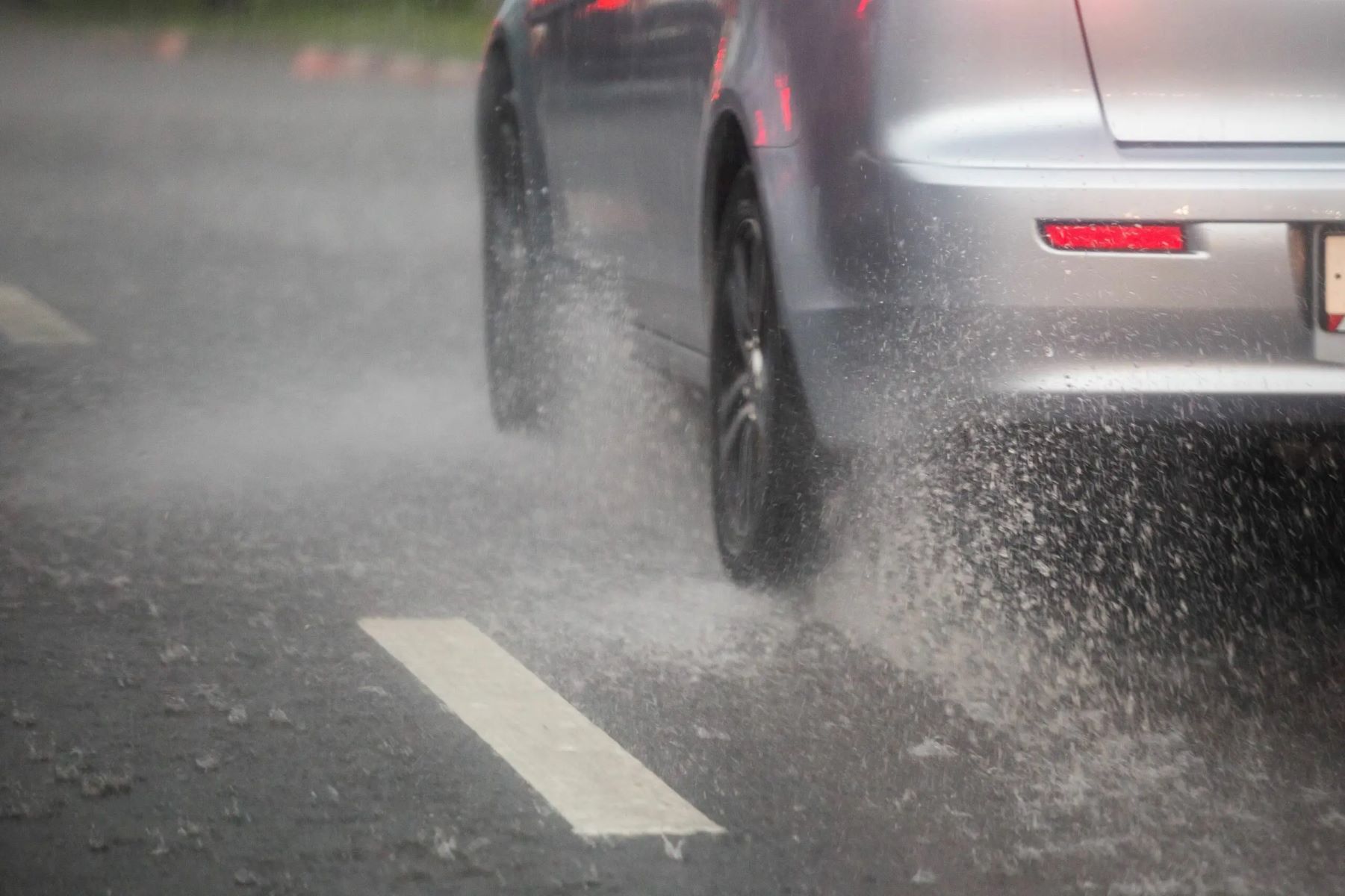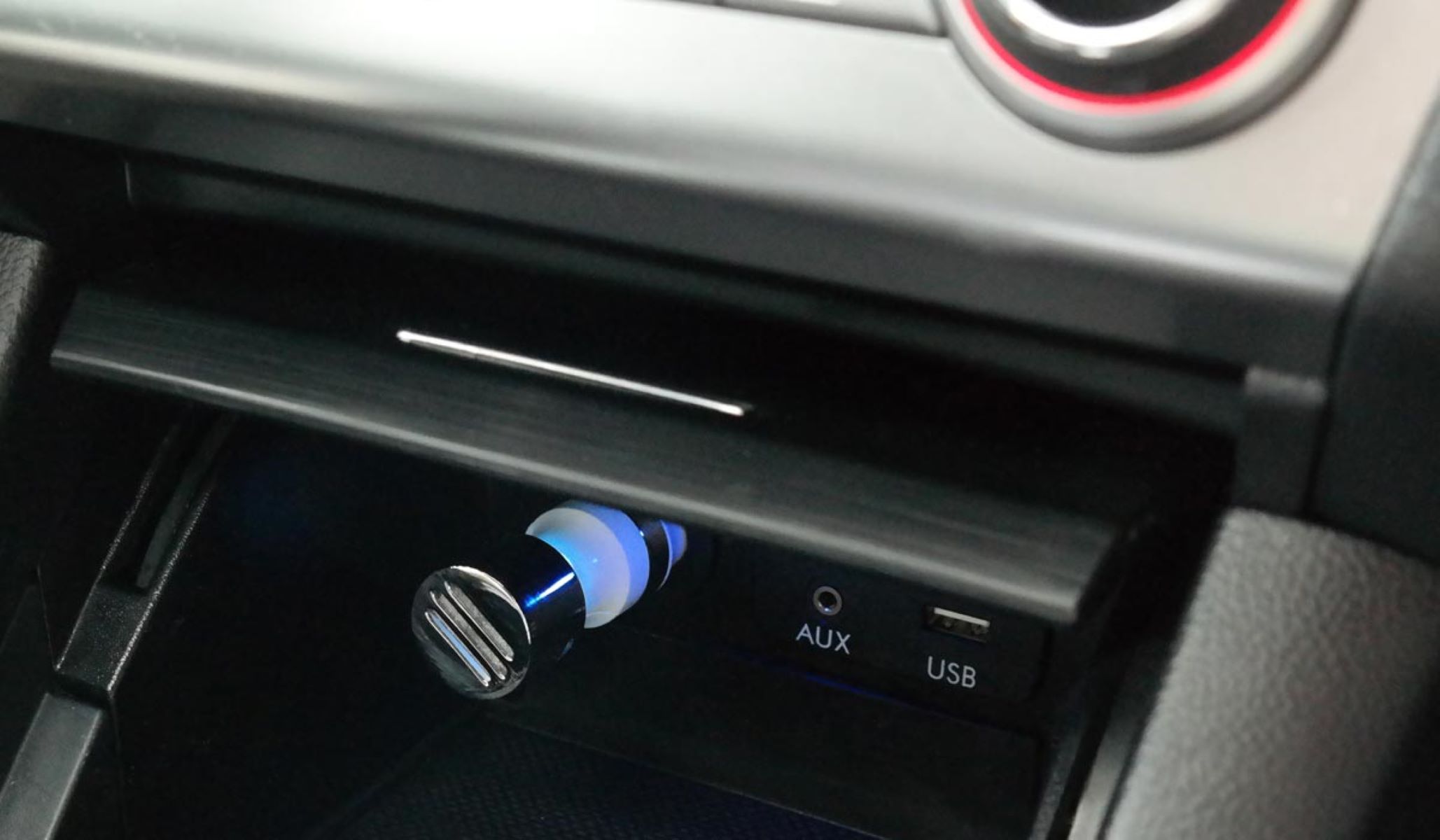Home>Automotive>5 Essential Steps To Take When Your Vehicle Hydroplanes


Automotive
5 Essential Steps To Take When Your Vehicle Hydroplanes
Published: February 9, 2024
Learn the 5 essential steps to take when your vehicle hydroplanes to stay safe on the road. Expert advice for automotive safety.
(Many of the links in this article redirect to a specific reviewed product. Your purchase of these products through affiliate links helps to generate commission for Regretless.com, at no extra cost. Learn more)
Table of Contents
Introduction
Driving in adverse weather conditions can present unexpected challenges, and one of the most frightening experiences for any driver is hydroplaning. This occurs when a layer of water builds up between the tires of a vehicle and the road surface, leading to a loss of traction and control. The feeling of helplessness as the steering wheel becomes unresponsive and the vehicle veers out of control is a scenario that every driver hopes to avoid. However, being prepared and knowing how to react can make all the difference in such a situation.
In this article, we will explore five essential steps to take when your vehicle hydroplanes. By understanding and implementing these steps, you can improve your chances of safely navigating through a hydroplaning incident. From staying calm to regaining control, each step plays a crucial role in helping you manage the situation effectively. Whether you are a new driver or an experienced one, being equipped with this knowledge can instill confidence and preparedness for unexpected moments on the road.
Hydroplaning is a common occurrence on wet roads, especially during heavy rain or when water accumulates on the surface. It can happen to any vehicle, regardless of its size or type, and catching drivers off guard. The sudden loss of control can lead to accidents and collisions if not handled properly. Therefore, being aware of the steps to take during a hydroplaning event is vital for ensuring the safety of both the driver and passengers.
As we delve into each step, it's important to remember that remaining composed and focused is key to successfully managing a hydroplaning situation. Panic and abrupt reactions can exacerbate the loss of control, making it crucial to approach the scenario with a clear mind and a steady hand. With this mindset and the knowledge of the essential steps, you can navigate through the challenge of hydroplaning with confidence and composure.
Step 1: Stay Calm
When your vehicle starts to hydroplane, it's natural to feel a surge of panic and anxiety. The sudden loss of control can be jarring, and the instinct to react impulsively may arise. However, the first and most crucial step in managing a hydroplaning situation is to stay calm. Keeping a clear head amidst the chaos is essential for making rational decisions and executing the subsequent steps effectively.
As you feel the steering wheel becoming unresponsive and the vehicle veering off its intended path, take a deep breath and focus on maintaining composure. Panicking can lead to erratic movements and abrupt steering, further exacerbating the loss of control. By staying calm, you can prevent the situation from escalating and create a conducive environment for implementing the necessary corrective actions.
Moreover, a composed mindset enables you to assess the road conditions and the behavior of the vehicle accurately. This assessment is vital for understanding the extent of hydroplaning and planning your next moves accordingly. It allows you to gauge the severity of the situation and respond with calculated measures, reducing the risk of further complications.
In addition to aiding your decision-making process, staying calm also has a reassuring effect on passengers. If you have passengers in the vehicle, your composed demeanor can help alleviate their anxiety and instill confidence in your ability to handle the situation. This can contribute to a more controlled environment within the vehicle, promoting cooperation and a sense of security during the challenging moment.
Remember, staying calm doesn't mean being indifferent to the situation. It means acknowledging the gravity of the scenario while maintaining a steady and focused mindset. By doing so, you position yourself to navigate through the subsequent steps with clarity and precision, increasing the likelihood of regaining control and safely maneuvering through the hydroplaning event.
In essence, staying calm forms the foundation for effectively managing a hydroplaning situation. It sets the tone for the subsequent steps and influences the overall outcome of the incident. By embracing composure in the face of adversity, you empower yourself to confront the challenge with resilience and determination, ultimately enhancing the safety of yourself and those around you.
Step 2: Ease Off the Gas
As your vehicle begins to hydroplane, the sensation of losing control can be disorienting and alarming. In such a moment, the instinct to react impulsively may arise, but it's crucial to maintain a composed and focused approach. One of the immediate actions to take when facing a hydroplaning scenario is to ease off the gas pedal. This step is essential for mitigating the loss of traction and regaining control of the vehicle.
When you notice the onset of hydroplaning, gently and gradually release pressure on the accelerator. By doing so, you reduce the power to the wheels, minimizing the risk of further acceleration and potential skidding. This deliberate reduction in speed helps in preventing the tires from spinning faster and exacerbating the loss of traction caused by the layer of water on the road surface.
Easing off the gas also contributes to stabilizing the vehicle's momentum, allowing it to gradually decelerate. This controlled reduction in speed is a fundamental aspect of managing a hydroplaning event, as it aligns with the objective of regaining traction and steering capability. By moderating the vehicle's speed, you create a conducive environment for implementing corrective maneuvers and steering adjustments.
Moreover, reducing acceleration minimizes the risk of sudden jerks or jolts that can further compromise control. Abrupt acceleration changes can instigate skidding and amplify the challenges posed by hydroplaning. Therefore, by easing off the gas pedal in a gradual and controlled manner, you actively work towards counteracting the effects of hydroplaning and setting the stage for the subsequent steps in regaining control.
In addition to addressing the immediate impact of hydroplaning, easing off the gas serves as a proactive measure for preventing potential hazards. By moderating the vehicle's speed, you reduce the risk of collisions and loss of stability. This cautious approach aligns with the overarching goal of safely navigating through the hydroplaning event and minimizing the impact of the loss of control.
Ultimately, easing off the gas is a pivotal step in managing a hydroplaning situation. It forms the basis for initiating corrective actions and sets the stage for subsequent maneuvers aimed at regaining control. By exercising restraint on the accelerator, you contribute to the overall effort of mitigating the effects of hydroplaning and steering the vehicle towards stability and safety.
Step 3: Steer Gently
As your vehicle encounters the unsettling phenomenon of hydroplaning, the instinct to forcefully wrench the steering wheel may arise, driven by the urgency to regain control. However, in this critical moment, the approach to steering plays a pivotal role in determining the trajectory of the vehicle. The third essential step in managing a hydroplaning event is to steer gently.
When confronted with hydroplaning, the steering response of the vehicle becomes compromised, and abrupt movements can exacerbate the loss of control. Therefore, it is imperative to adopt a gentle and deliberate approach to steering. Rather than making sudden and sharp turns, aim to make subtle and controlled adjustments to the steering wheel.
By steering gently, you reduce the risk of provoking skidding or further destabilizing the vehicle. This approach aligns with the objective of regaining traction and maneuvering the vehicle back on course. The subtle movements facilitate a gradual realignment of the vehicle's direction, allowing the tires to regain contact with the road surface and regain traction.
Moreover, gentle steering contributes to maintaining stability within the vehicle. Abrupt and forceful steering maneuvers can unsettle the passengers and intensify the sense of unease during a hydroplaning event. Therefore, by adopting a composed and measured approach to steering, you create a calmer and more controlled environment within the vehicle, fostering a sense of reassurance for both the driver and passengers.
In addition to addressing the immediate impact of hydroplaning, gentle steering serves as a proactive measure for preventing potential hazards. By maintaining a steady and controlled grip on the steering wheel, you minimize the risk of overcompensating and veering off course. This cautious approach aligns with the overarching goal of safely navigating through the hydroplaning event and minimizing the impact of the loss of control.
Ultimately, steering gently forms a crucial component of managing a hydroplaning situation. It sets the tone for regaining control and steering the vehicle towards stability and safety. By embracing a composed and deliberate approach to steering, you contribute to the overall effort of mitigating the effects of hydroplaning and charting a course towards a safe resolution.
Step 4: Avoid Sudden Braking
Amidst the unsettling experience of hydroplaning, the impulse to apply sudden and forceful braking can be overwhelming. However, in this critical moment, the approach to braking plays a pivotal role in determining the outcome of the situation. The fourth essential step in managing a hydroplaning event is to avoid sudden braking.
When a vehicle hydroplanes, the layer of water between the tires and the road surface compromises the effectiveness of braking. Sudden and aggressive application of the brakes can lead to further loss of traction, causing the wheels to lock up and the vehicle to skid uncontrollably. Therefore, it is imperative to refrain from abrupt and forceful braking maneuvers when faced with hydroplaning.
Instead, opt for a gradual and controlled approach to braking. Gently and steadily apply pressure to the brake pedal, allowing the vehicle to decelerate in a measured manner. This deliberate reduction in speed aligns with the objective of regaining traction and stability, mitigating the impact of hydroplaning on the vehicle's maneuverability.
By avoiding sudden braking, you minimize the risk of skidding and loss of control. The gradual reduction in speed facilitates a more controlled response from the vehicle, reducing the likelihood of abrupt and erratic movements that can exacerbate the effects of hydroplaning. This cautious approach contributes to creating a stable and secure environment within the vehicle, fostering a sense of reassurance for both the driver and passengers.
Furthermore, refraining from sudden braking serves as a proactive measure for preventing potential hazards. By exercising restraint and moderation in applying the brakes, you reduce the risk of destabilizing the vehicle and veering off course. This approach aligns with the overarching goal of safely navigating through the hydroplaning event and minimizing the impact of the loss of control.
Ultimately, avoiding sudden braking is a fundamental aspect of managing a hydroplaning situation. It forms a crucial part of the collective effort to mitigate the effects of hydroplaning and steer the vehicle towards stability and safety. By embracing a composed and controlled approach to braking, you contribute to the overall endeavor of navigating through the challenges posed by hydroplaning with resilience and determination.
Step 5: Regain Control
As your vehicle navigates through the disconcerting experience of hydroplaning, the ultimate objective is to regain control and steer it back on course. This pivotal step encapsulates the culmination of the preceding measures and sets the stage for reclaiming stability and maneuverability amidst the challenging circumstances.
Regaining control involves a multifaceted approach, encompassing a harmonious integration of steering adjustments, speed moderation, and a keen awareness of the road conditions. It requires a calculated and composed demeanor, underpinned by a resolute determination to counteract the effects of hydroplaning and guide the vehicle towards safety.
The process of regaining control begins with a meticulous assessment of the road surface and the behavior of the vehicle. By gauging the extent of hydroplaning and the responsiveness of the vehicle, you can tailor your corrective actions to suit the prevailing conditions. This astute evaluation forms the bedrock for formulating a strategic course of action, aligning with the overarching goal of restoring stability and control.
Subsequently, deliberate and gentle steering adjustments come into play, allowing the vehicle to gradually realign its trajectory. By exercising a steady and controlled grip on the steering wheel, you facilitate a nuanced recalibration of the vehicle's direction, working in tandem with the road surface to regain traction and stability. This measured approach to steering forms an integral component of regaining control, fostering a sense of assurance and confidence amidst the tumultuous circumstances.
Simultaneously, the moderation of speed through restrained and calculated braking maneuvers contributes to the overall effort of regaining control. By applying gradual pressure to the brakes, you orchestrate a controlled deceleration, harmonizing with the steering adjustments to guide the vehicle towards a state of equilibrium. This synchronized interplay between speed moderation and steering finesse forms the cornerstone of regaining control, embodying a synchronized and methodical response to the challenges posed by hydroplaning.
Ultimately, regaining control is a testament to the driver's resilience and adaptability in the face of adversity. It epitomizes the fusion of composure, skill, and astute decision-making, culminating in the restoration of stability and control. By embracing the multifaceted approach encapsulated within this pivotal step, drivers can navigate through the trials of hydroplaning with a steadfast resolve, ultimately emerging victorious in their quest to reclaim command over the vehicle.
This comprehensive approach to regaining control encapsulates the essence of effective hydroplaning management, underscoring the significance of composure, skill, and strategic maneuvering in steering the vehicle towards safety and stability.
Conclusion
Navigating through a hydroplaning event demands a harmonious blend of composure, skill, and strategic maneuvering. As drivers encounter the unsettling loss of control amidst the challenges posed by hydroplaning, the five essential steps outlined in this article serve as guiding beacons, illuminating the path to safety and stability.
Staying calm amidst the chaos forms the bedrock for effective hydroplaning management, fostering a composed and focused mindset essential for rational decision-making. By maintaining composure, drivers lay the groundwork for executing subsequent steps with clarity and precision, ultimately enhancing the safety of themselves and their passengers.
Easing off the gas emerges as a pivotal measure in mitigating the impact of hydroplaning, contributing to the controlled reduction in speed and the stabilization of the vehicle's momentum. This deliberate action aligns with the overarching goal of regaining traction and steering capability, setting the stage for subsequent maneuvers aimed at regaining control.
The importance of steering gently cannot be overstated, as it forms a critical component in the quest to counteract the effects of hydroplaning. By embracing a composed and deliberate approach to steering, drivers create a calmer and more controlled environment within the vehicle, fostering a sense of reassurance for both themselves and their passengers.
Furthermore, the avoidance of sudden braking emerges as a fundamental aspect of managing a hydroplaning situation, serving as a proactive measure for preventing potential hazards. By exercising restraint and moderation in applying the brakes, drivers contribute to the overall endeavor of navigating through the challenges posed by hydroplaning with resilience and determination.
Ultimately, the culmination of these steps in the process of regaining control epitomizes the fusion of composure, skill, and astute decision-making, culminating in the restoration of stability and control. By embracing the multifaceted approach encapsulated within this pivotal step, drivers can navigate through the trials of hydroplaning with a steadfast resolve, ultimately emerging victorious in their quest to reclaim command over the vehicle.
In essence, the collective implementation of these essential steps forms a cohesive strategy for managing the complexities of hydroplaning, underpinning the fundamental goal of ensuring safety and stability on the road. By equipping themselves with the knowledge and skills encapsulated within these steps, drivers fortify their ability to confront the challenges of hydroplaning with resilience and determination, ultimately emerging triumphant in their pursuit of safety and control.














